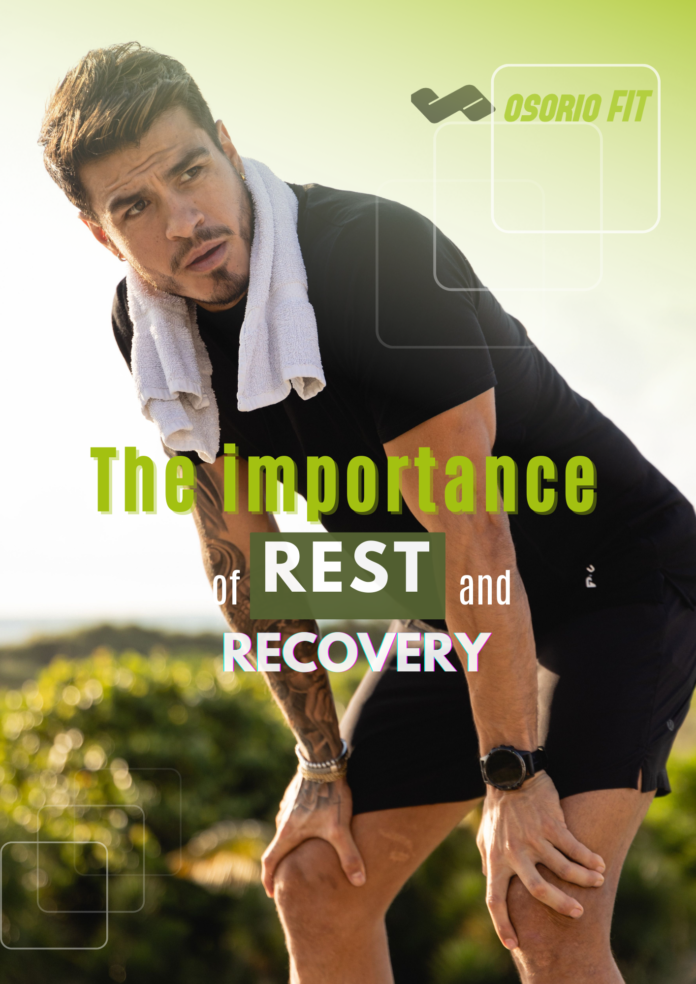Rest and recovery in sports or exercise routines are just as important as the intensity of the physical activity when preparing for an event or competition.
Sleeping windows, rest periods, and breaks for recovery help prevent muscle stress and protect us from overstimulation, physical exhaustion due to fatigue, or even injuries caused by excessive strain.
As a fitness coach, I recognize the importance of rest and recovery in routines, which are incorporated into various personalized training programs. Today, I’ll share some reasons why they are important.
Resting is fundamental
Nature is wise, as is your body. When you start to feel fatigued or overexerted during workouts, your body sends signals for you to rest, take a break, or go straight to bed.
Sports are perhaps one of the most enjoyable activities we can engage in. The brain enjoys the release of endorphins, muscles grow stronger, and the body becomes agile. But to continue enjoying this state, it’s important to consider rest.
Experts in the field emphasize that restful sleep is as, if not more, important than the exercise routine itself. Lowering the intensity, taking a day to break the routine and relax, will always be a good option to continue achieving results.
When you exercise or train, you take your body out of its comfort zone. Your heart accelerates to increase blood circulation and oxygenate your tissues and muscles.
Microfibers in the muscles also break down during strength or endurance exercises, maintaining challenging movements for extended periods. These situations occur without you even realizing them.
However, all these efforts, the extra work of the heart, the broken fibers, muscle fatigue, and stress, need time to recover and return to normal.
Also, remember that it’s not just about the muscles. It’s about the energy your body requires to exercise, the depletion of reserves due to nutrition, and the loss of fluids through excessive sweating.
The Importance of Rest
Scientifically, it has been proven that rest is a fundamental part of training, and the final outcome or goal sought through exercise depends on it.
Studies show that in order for your muscles to fully regenerate and grow, it’s necessary to repeat training cycles, eat properly, and get sufficient sleep.
Resting properly is not just about sleeping; it also involves incorporating healthy eating habits, replenishing necessary salts and fluids for the body, and engaging in different activities.
Rest and recovery in your routines can be achieved by watching a movie, getting a massage, going to a spa, or, in other words, pampering your body.
Recovery in Your Routines
In these cases, it’s also important to mention active recovery, which involves not remaining completely still or lying on a couch.
A good way to achieve recovery in your routines is by performing light and gentle movements or moderate stretching exercises at regular intervals to keep the muscle group alert.
Many athletes prefer this type of recovery, which involves quick and gentle activities such as family walks, bike rides, low-impact aerobic classes, or dance, rather than lying flat at home.
Activities like yoga, meditation, scented candles, or relaxing sessions in a wet area are also great alternatives for recovery. It all depends on your preferences and access to these types of resources.
Just as you plan your exercise routines, include rest in your planning.
An example followed by high-performance athletes is taking a few days off immediately after the most demanding routine of the week to recover.
Finally, as you progress in your regular exercise routine or when it becomes a habit, you will also become more acquainted with your body and learn to recognize when rest is needed.
As a personal trainer, part of my support and guidance will be to ensure that you rest and recover correctly in your routines.





